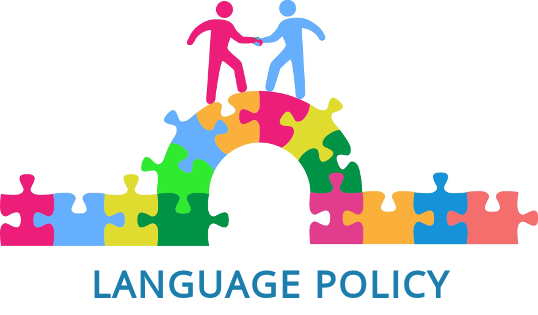Romani
The Council of Europe has been committed to the educational inclusion of Roma for more than 50 years.
This page presents the developments that have contributed to it.
The Romani–Plurilingual Policy Experimentation
Launched in March 2022, the Romani-Plurilingual Policy Experimentation applies the Council of Europe’s concept of plurilingual and intercultural education to the educational inclusion of Roma pupils in primary schools in Greece, Slovakia and Slovenia.
Background
Despite the Council of Europe’s decades-long engagement with Romani issues, the educational inclusion of Romani children and adolescents continues to present major challenges. Successive recommendations from the Committee of Ministers are clear about the political principles and social values that should shape policy, and equally clear about the outcomes that policy implementation should achieve. Very few of them, however, concern themselves with those aspects of policy that shape classroom practice.
In 2018–2019 a Council of Europe expert group set out to elaborate more detailed guidance, proposing new ways of managing the educational inclusion of Romani children and adolescents. The group’s proposals, which have implications for the educational inclusion of other linguistic and cultural minorities, are based on the Council of Europe’s concept of plurilingual and intercultural education, which is the focus of Recommendation CM/Rec2022(1).
The policy experimentation
The Romani-Plurilingual Policy Experimentation (RPPE) involves three Council of Europe member states: Greece, Slovakia and Slovenia. Working with four primary schools in each country, the RPPE’s purpose is to explore ways of using Romani language and culture to further the educational inclusion of Roma pupils. RPPE implementation is scheduled to last for three school years: 2022/2023, 2023/2024, 2024/2025.
The RPPE’s actions are shaped by two principles that are fundamental to the Council of Europe’s work in language education: (i) language learners of all ages are also language users, social agents with their own agenda to fulfil; and (ii) language education should take account of all the languages present in a given educational context and help learners to develop integrated plurilingual repertoires and intercultural awareness. The pedagogical implications of these principles are elaborated in the RPPE handbook.
The RPPE’s preparatory phase ended in March 2022, when the policy experimentation was formally launched at a one-day online conference. Since then, under the guidance of their national coordinators, the participating schools have drawn up action plans for the school year 2022/2023 and begun to implement them. They are supported by regular online meetings organised by their national coordinator; additional guidance is provided by the RPPE’s academic coordinator, Professor David Little, who holds regular online meetings with individual schools.
The Curriculum Framework for Romani
Origin and purpose
The Curriculum Framework for Romani (CFR) and related resources were developed as part of the Council of Europe’s comprehensive response to Roma and Traveller issues. The European Roma and Travellers Forum was closely associated in this project which was partly funded by a voluntary contribution from Finland.
The CFR is designed for policy makers, writers of textbooks and other learning materials, teacher educators and teachers. It uses the descriptive categories and common reference levels of the Common European Framework of Reference for Languages and in doing so aligns itself with the wider policies that shape the Council of Europe’s work in language education.
Curriculum Framework for Romani (in 10 languages)
Description
The CFR defines proficiency in Romani at each of the first four levels of the Common European Framework of Reference for Languages (CEFR): A1, A2, B1, B2.
For the activities of listening, reading, spoken interaction, spoken production and writing, the CFR describes what the learner/user of Romani can do at each level in relation to eleven themes: Myself and my family; The house/caravan and its activities; My community; At school; Food and clothes; Festivals and celebrations; Travel and transport; Time, seasons, weather; Nature and animals; Roma crafts and professions; Hobbies and the arts.
The CFR can be used to address the needs of learners in three age groups:
- 3–6 years
- 6–11 years
- 11–16 years
and in three categories:
- those who are already proficient in Romani
- those who may hear Romani spoken at home but are not proficient in the language
- those from Roma communities for whom Romani is not a language of the home.
European Language Portfolio
To support the implementation of the CFR, the Council of Europe also developed two versions of the European Language Portfolio (ELP), for learners aged 6–11 and 11–16, and a teacher’s handbook that explains in detail how the ELPs can be used in the classroom. Components were carefully defined in close co-operation with the European Roma and Travellers Forum to ensure cultural relevance.
These tools are available in 10 languages:
- Two versions of the European Language Portfolio:
- for learners aged 6-11
- for learners aged 11–16
- Teacher’s Handbook
Seven language versions:
The Curriculum Framework for Romani and its related tools - two versions of the European Language Portfolio and a Teacher’s Handbook - were originally published in English and in Romani, and are also available in Czech, German, Lovari, North Central Romani, and Serbian.
Other resources
Recommendation CM/Rec(2008)5 on Policies for Roma and/or Travellers in Europe (addressed by the Committee of Ministers of the Council of Europe to its member states)
Hearing of the European Roma and Travellers Forum:
Council of Europe Descriptive Glossary of terms relating to Roma issues (May 2012)



